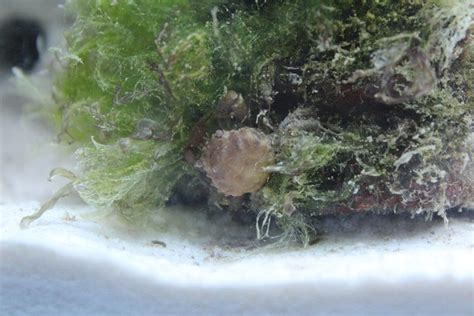Your Comprehensive Guide to Saltwater Hair Algae Control
Saltwater hair algae, with its wispy, dark-green strands, can quickly transform a beautiful aquarium into an unsightly mess. This tenacious algae isn't just visually unappealing; it can also suffocate corals and other invertebrates, disrupting the delicate balance of your saltwater ecosystem. This comprehensive guide will equip you with the knowledge and strategies to effectively combat hair algae and maintain a thriving aquarium.
What is Saltwater Hair Algae?
Saltwater hair algae, scientifically known as Bryopsis spp., is a type of filamentous green algae that thrives in nutrient-rich environments. It attaches to rocks, substrates, and even corals, forming dense mats that hinder water flow and light penetration. Its rapid growth makes it a persistent nuisance for many aquarium hobbyists. Understanding its growth conditions is the first step towards effective control.
Identifying Saltwater Hair Algae
Before tackling the problem, accurate identification is crucial. While other algae types might resemble hair algae, distinguishing features include:
- Appearance: Long, thin, dark green filaments, often resembling tangled hair.
- Texture: Smooth and silky to the touch.
- Growth Pattern: Typically grows in clumps or mats, often attached to surfaces.
Why Does Hair Algae Thrive in My Aquarium?
Understanding the root causes is essential for long-term control. Many factors contribute to hair algae blooms:
- High Nutrient Levels: Excess nitrates (NO3) and phosphates (PO4) are the primary culprits. These nutrients fuel algae growth.
- Insufficient Water Circulation: Stagnant water allows algae to establish and proliferate easily.
- Inadequate Lighting: While excessive light can contribute, insufficient light can also cause some algae types to adapt by producing longer strands.
- Lack of Competition: A balanced aquarium with a healthy population of algae-eating organisms can help to control algae.
- Substrate Issues: Old or improperly cleaned substrates can harbor excessive nutrients.
How to Test for Nitrate and Phosphate Levels?
Regular water testing is critical. Use reliable test kits to monitor nitrate and phosphate levels. Maintaining appropriate levels within the recommended range is crucial.
How Often Should I Change My Aquarium Water?
Regular water changes are vital. Aim for 10-20% water changes weekly to help dilute excess nutrients and maintain water quality.
How Can I Improve Water Circulation in My Aquarium?
Invest in high-quality powerheads to create sufficient water flow. Proper circulation prevents dead spots where algae can flourish.
Effective Strategies for Saltwater Hair Algae Control
Several methods can be employed, often in combination, to effectively manage hair algae:
1. Manual Removal:
For small infestations, carefully remove visible algae using tweezers or a small algae scraper. Be gentle to avoid damaging corals and other invertebrates.
2. Water Changes:
Regular water changes (10-20% weekly) significantly reduce nutrient levels, slowing algae growth. Ensure you are using high-quality saltwater mixes.
3. Nutrient Export:
- Improved Filtration: Consider upgrading to a more efficient filtration system or adding additional filtration media, such as phosphate-removing resin.
- Regular Cleaning: Thoroughly clean and maintain your filter media according to the manufacturer's recommendations.
- Protein Skimmer: A good protein skimmer efficiently removes organic waste, reducing nutrient buildup.
4. Biological Control:
Introduce herbivorous fish and invertebrates that graze on algae. However, be mindful of the compatibility of these organisms with your existing inhabitants and the size of your tank.
5. Chemical Control (Use with Caution):
Chemical treatments, such as hydrogen peroxide, can effectively kill algae but should be used sparingly and with extreme caution. Always follow the manufacturer's instructions precisely and monitor your water parameters closely.
Preventing Future Hair Algae Outbreaks
Prevention is always better than cure. Here are some proactive steps you can take:
- Accurately Acclimate New Specimens: Properly acclimate new corals and fish to prevent the introduction of excess nutrients or algae spores.
- Maintain Balanced Water Parameters: Regular testing and monitoring of water parameters are essential for preventing algae blooms.
- Avoid Overfeeding: Overfeeding leads to nutrient buildup, fueling algae growth.
- Quarantine New Additions: Quarantining new specimens helps prevent the introduction of algae or parasites.
Conclusion
Controlling saltwater hair algae requires a multifaceted approach. By understanding the causes of its growth and implementing the strategies outlined above, you can successfully manage this persistent problem and maintain a healthy, thriving saltwater aquarium. Remember, patience and consistency are key. Don’t get discouraged if results aren’t immediate; a gradual and methodical approach will yield the best long-term outcomes.

